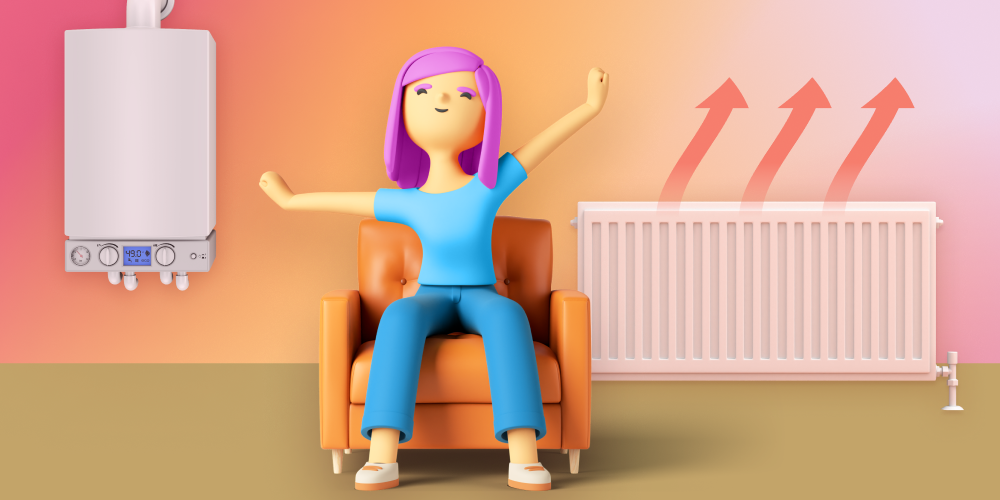

In recent years, more and more apartment owners have given preference to installing an autonomous heating system instead of a centralized one. Most often they operate on the basis of a gas boiler.
Moreover, most developers initially choose individual heating for new apartments at the design stage. Below we will tell you everything you need to know about autonomous heating.
Connection process
If you decide to connect to an autonomous heating system, you must take into account that this process takes a lot of time and consists of several stages:
- Determining the possibility of connecting an individual heating system:
- Sending a request to the local gas distribution company about the possibility of connecting a gas boiler;
- Establishing the presence of connections to the gas pipeline for no more than 3 boilers on one pipe;
- Development and registration of a connection project, establishing the location of the boiler and meter in accordance with current rules;
- Registration of an application for disconnection from the central heating supplier and disconnection of radiators;
- Connecting radiators into a single individual heating system;
- Collection of documents for ownership of real estate,
- Registration of a request to connect the boiler to the gas network and undergo safety training;
- Installation of the boiler and connecting it to radiators and the gas network.
Important: To make connection/disconnection easier, we recommend doing this in the summer, when space heating is not required and the central heating pipes are not filled with hot water. Additionally, it is strongly recommended that you do not proceed to the next stage on the list without obtaining permissions from the previous stage.
Advantages of an individual heating system:
- Possibility to individually determine the beginning and end of the heating period, in accordance with individual preferences;
- The ability to individually set the room temperature strictly according to your preferences;
- Possibility of installing a programmable thermostat that maintains the required temperature depending on the air temperature, time period, etc.;
- Significant savings on utility costs;
- Possibility of creating an individual microclimate in each room separately,
- Payment is strictly based on the volume of gas used, regardless of general utility tariffs;
- High level of efficiency of heating systems;
- Reliability, safety and durability of equipment.
Disadvantages of an individual heating system:
- A long and multi-stage process of disconnecting from central heating;
- Restrictions and checks when installing the boiler;
- The need for annual inspection of the boiler by specialists;
- High cost of purchasing and connecting an individual system.
Electric heating systems
If you have decided on an electric heating system, you have several options to choose from:
- electric boiler - installed and looks the same as a gas boiler, but more simplified, without a chimney and ventilation system;
- heat pump, air conditioner - the principle of operation is very simple - it takes air from outside, heats it and sends it into the room;
- cable floor heating system;
- infrared film field.
Risks of installing an autonomous heating system without permits:
- high fines and the obligation to connect back to the centralized heating system;
- a significant drop in gas pressure throughout the house and, as a consequence, failure of all gas boilers on the line;
- the possibility of explosion of gas installations and gas pipeline connections due to incorrect connection;
- leaks from pipes and radiators due to improper connection.
The CasaHub platform contains thousands of apartment offers with both central and individual heating. Check out all the offers here: Catalog of apartments.
Conclusion
In conclusion, more and more apartment owners are choosing to switch to autonomous heating systems, especially gas boilers. The process of connecting to such a system includes several stages, starting with determining the possibility of connection and ending with installing the boiler and connecting to the gas network. The advantages of such a system include the freedom to individually control the heating period and temperature, significant savings on maintenance and the ability to create a personalized microclimate in each room. However, the process of moving to an offline system may involve restrictions and checks, and the initial costs can be significant. There are also risks associated with incorrect installation of the system, which can lead to fines, reduced pressuregas supply and other safety issues.
Latest News
Choose the branch you are in
- Cahul Prospectul Republicii
- Chisinau Constantin Tanase
- Chisinau Maib Park







%20%40Serjio%202024%2C%2014%20November%20(1).png?1731675402889)
